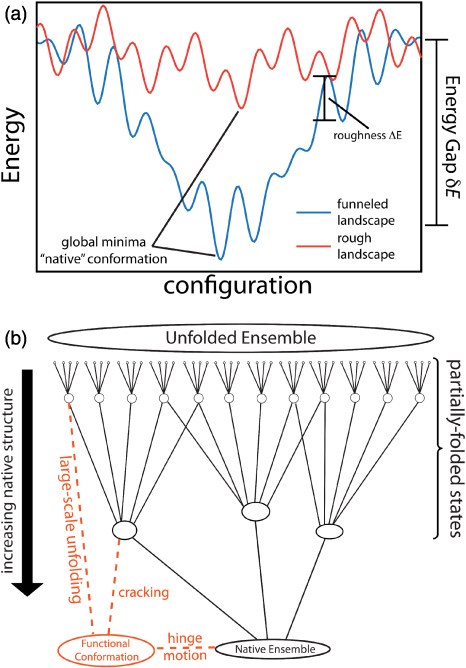By Charles H Martin, PhD (Calculation Consulting).
This is the big question on everyone’s mind these days. C’mon we all know the answer already:
“the long-term behavior of certain neural network models are governed by the statistical mechanism of infinite-range Ising spin-glass Hamiltonians” [1] In other words,
Multilayer Neural Networks are just Spin Glasses? Right?
This is kinda true–depending on what you mean by a spin glass.
In a recent paper by LeCun, he attempts to extend our understanding of training neural networks by studying the SGD approach to solving the multilayer Neural Network optimization problem [1]. Furthermore, he claims
None of these works however make the attempt to explain the paradigm of optimizing the highly non-convex neural network objective function through the prism of spin-glass theory and thus in this respect our approach is very novel. And, again, this is kinda true
But here’s the thing…we already have a good idea of what the Energy Landscape of multiscale spin glass models* look like–from early theoretical protein folding work (by Wolynes, Dill, etc [2,3,4]). In fact, here is a typical surface:

Energy Landscape of MultiScale Spin Glass Model
*[technically these are Ising spin models with multi-spin interactions]
Let us consider the nodes, which above represent partially folded states, as nodes in a multiscale spin glass–or , say, a multilayer neural network. Immediately we see the analogy and the appearance of the ‘Energy funnel’ In fact, researchers have studied these ‘folding funnels’ of spin glass models over 20 years ago [2,3,4]. And we knew then that
as we increase the network size, the funnel gets sharper

3D Energy Landscape of the Folding Funnel of a Spin Glass
Note: the Wolynes protein-folding spin-glass model is significantly different from the p-spin Hopfield model that LeCun discusses because it contains multi-scale, multi-spin interactions. These details matter.
Spin glasses and spin funnels are quite different. Spin glasses are highly non-convex with lots of local minima, saddle points, etc. Spin funnels, however, are designed to find the spin glass of minimal-frustration, and have a convex, funnel shaped, energy landscape.
This seemed to be necessary to resolve one of the great mysteries of protein folding: Levinthal’s paradox [5]. If nature just used statistical sampling to fold a protein, it would take longer than the ‘known’ lifetime of the Universe. It is why Machine Learning is not just statistics.

Spin Funnels (DFM) vs Spin Glasses (SG) [4]
Deep Learning Networks are (probably) Spin Funnels
So with a surface like this, it is not so surprising that an SGD method might be able to find the Energy minima (called the Native State in protein folding theory). We just need to jump around until we reach the top of the funnel, and then it is a straight shot down. This, in fact, defines a so-called ‘folding funnel’[4]
So is not surprising at all that SGD may work.
Recent research at Google and Stanford confirms that the Deep Learning Energy Landscapes appear to be quite smooth and generally convex! [6]
Note that a real theory of protein folding, which would actually be able to fold a protein correctly (i.e. Freed’s approach [7]), would be a lot more detailed than a simple spin glass model. Likewise, real Deep Learning systems are going to have a lot more engineering details–to avoid overtraining (Dropout, Pooling, Momentum) than a theoretical spin funnel.
It is not that Deep Learning is non-convex–is that we need to avoid over-training
Still, hopefully we can learn something using the techniques developed to study the energy landscape of multi-scale spin glass/ spin funnels models. [8,9], thereby utilizing methods theoretical chemistry and condensed matter physics.
Indeed, I believe this is the first conjecture that Supervised Deep Learning is related to a Spin Funnel. In the next post, I will examine the relationship between Unsupervised Deep Learning and the Variational Renormalization Group





 雷达卡
雷达卡
















 提升卡
提升卡 置顶卡
置顶卡 沉默卡
沉默卡 变色卡
变色卡 抢沙发
抢沙发 千斤顶
千斤顶 显身卡
显身卡







 京公网安备 11010802022788号
京公网安备 11010802022788号







